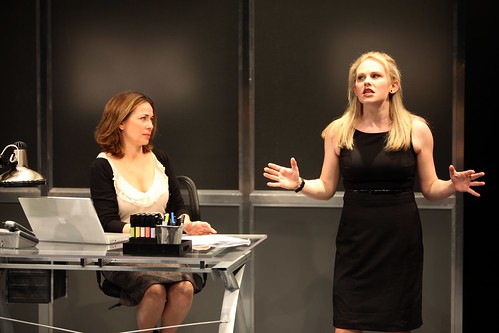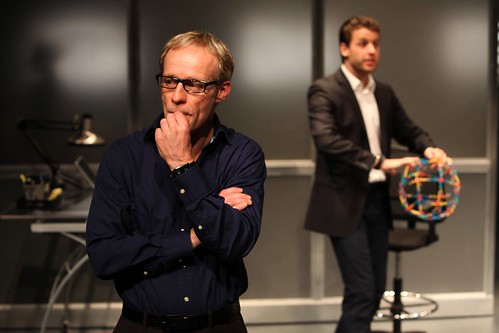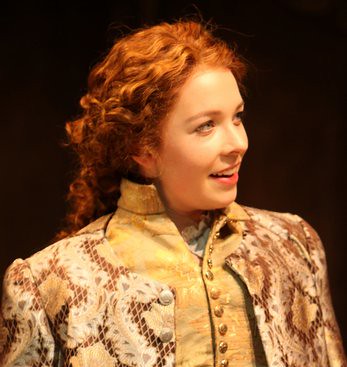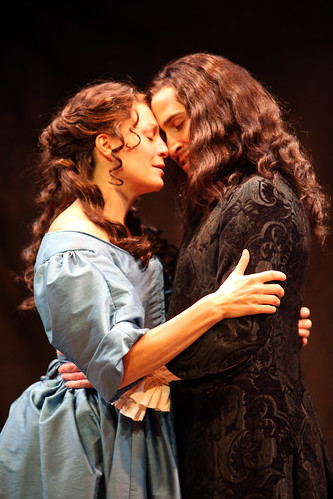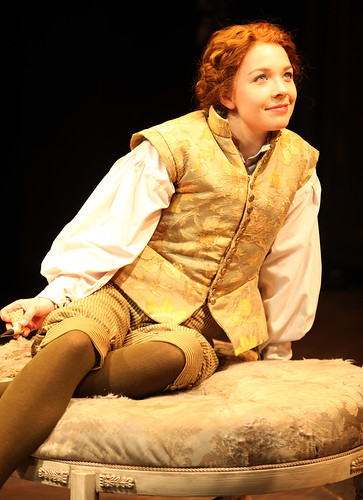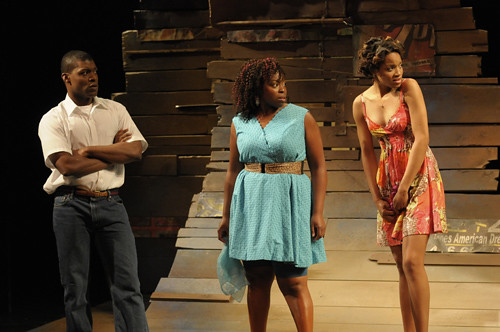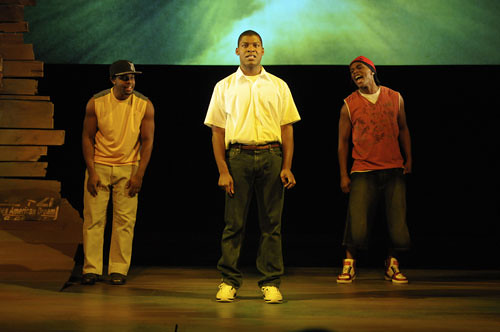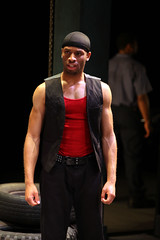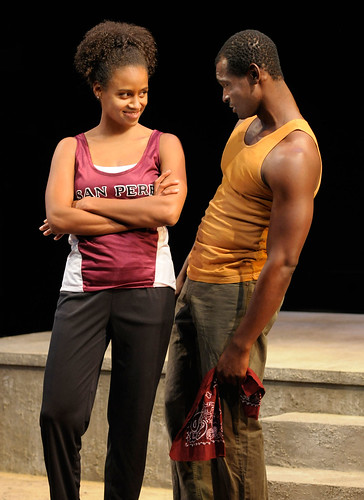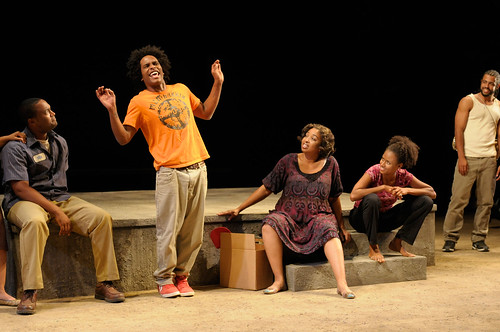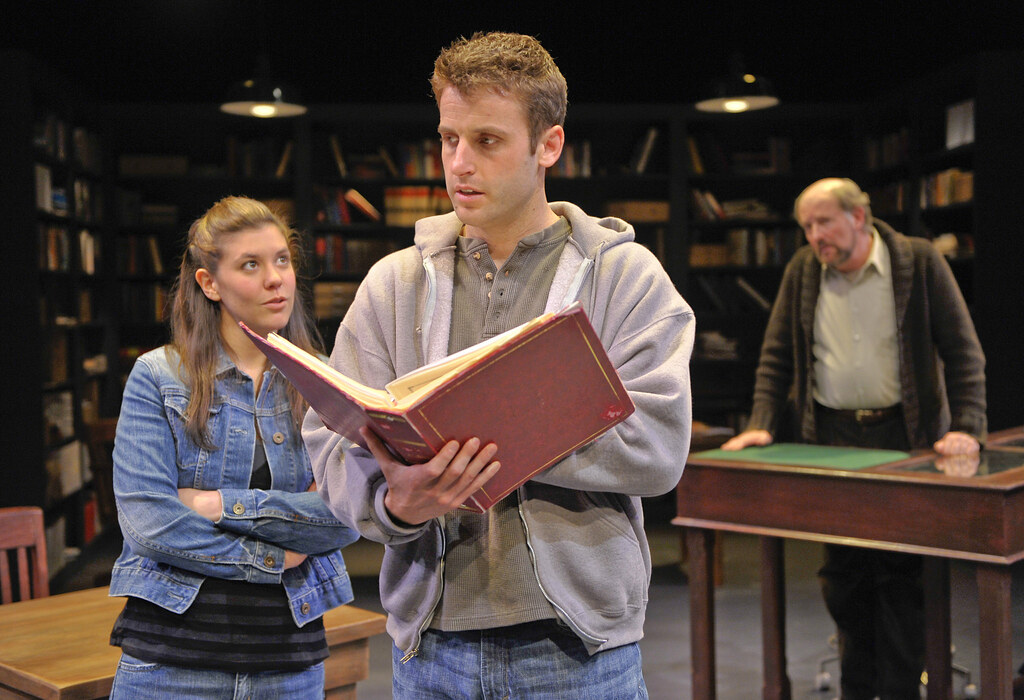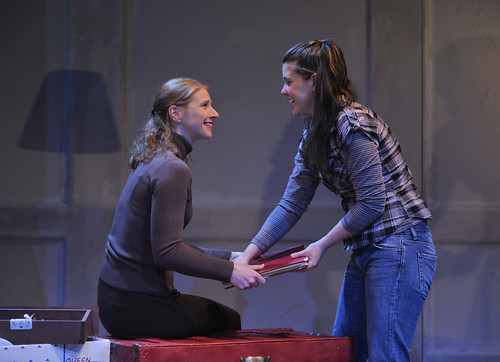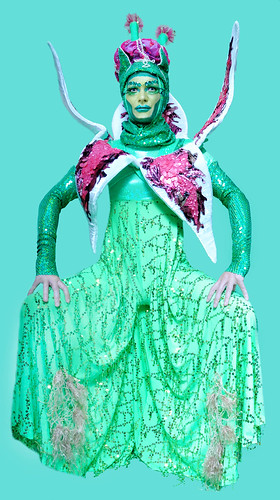
Taylor Mac as Lily. Photo by Jose A. Guzman Colon
There’s a lot of excitement burbling through the Bay Area theater community this spring. One of the reasons is the Magic Theatre’s The Lily’s Revenge, a ballsy five-hour play by Stockton native Taylor Mac.
With five acts performed in five different styles – musical theater, dance, puppets, Elizabethan-style drama – the show has a cast of nearly 40 (all local, by the way) musicians, actors, dancers, acrobats, drag queens, etc. There are actually six directors – one for each act plus one to direct the intermission events between each act. This is definitely the biggest, boldest theatrical event of the spring.
Check out this extraordinary roster of directors:
Meredith McDonough, director of New Works at TheatreWorks
Marissa Wolf, artistic director of Crowded Fire Theater
Erika Chong Shuch, choreographer and director of Erika Chong Shuch Project
Erin Gilley, founding artistic director of Elastic Future
Jessica Holt, director at Berkeley Playhouse, Magic Theatre, Shotgun Players and more
Jessica Heidt, artistic director of Climate Theater
Among the enormous cast are Julia Brothers, Jeri Lynn Cohen, Carlos Aguirre and Tobie Windham.
I had the pleasure of interviewing Mac and Magic Theatre Artistic Director Loretta Greco for a feature in the San Francisco Chronicle. Read the feature here.
As usual, I couldn’t fit all the good stuff into the story. Here’s more with Taylor Mac.
Asking audience members to commit to a five-hour experience is a lot. Mac understands this and asks you to consider the following: “You go to the office for eight hours a day, sit at a desk and do things. Here you have an opportunity to hang out for five hours at what is essentially a party. You get to think about themes that are essential to the way we’re living our lives. You’ll see adults dressed up like flowers in the most amazing costumes you’ll ever see. You’ll experience a theatrical play you’ll never forget. Or you can go to the office for five hours and forget almost everything about your day.”
Mac says five hours is really nothing in our lives, “especially if it’s an experience you’ll remember the rest of your life. Five hours is nothing.”
After having done The Lily’s Revenge to much acclaim at New York’s HERE Art Center, Mac says he’s in love with the long form because long shows are events, not the usual thing.
“The audience makes an investment and comes with different expectations,” he says. “When you give people what they think they want, you end up with High School Musical, which they don’t actually want. They may think they do, but they don’t actually want what they already know. I get that. I see them at these shows getting what they said they want. They’re bored out of their minds, but they stand up at the end. They don’t look bored at my shows because they’re constantly trying to figure it out.”
Mac’s drag persona is, as some drag personae tend to be, larger than life and outrageously wonderful. Still, people ask Mac, who happens to be adorable in his civilian get-up, why he has to channel his talents through the exaggerated makeup and wild costumes.
“In some ways, when people say that, it’s like they’re saying, ‘You don’t have to do drag. You don’t have to be gay.’ Ugh. I feel like my ddrag is what I look like on the inside,” Mac says. “I’m not hiding in drag, not hiding behind the costume. I’m exposing something. When I dress in jeans and a T-shirt, that’s when I’m hiding because I blend in with everybody else. When I’m on stage, my responsibility is to expose something about myself I wouldn’t normally. Even with the Lily costume, it’s may saying what I look like on the inside: ugly, beautiful, chaotic, specific, polished, rough, feminine, masculine. All at the same time. This is the full range of who I am. When I try to find an aesthetc or look that expresses what I feel like on the inside, it turns out to be a kind of freak drag.”
Having grown up in Stockton, Mac rebels against homogeneity, the surburan code of things having to be a certain way.
“I keep going back to that: how can I not be just one thing?” he says. “I want to show the range of who I am. It’s this anti-relativism that is so prevalent in so much of our culture that says there is only good and only evil. That couldn’t possibly be true. If it were, the pope would have to be wholly evil, and he’s not wholly evil. He’s not wholly good either. We know that. Obviously there is some gray there.”
Mac’s work comes from a queer perspective, but for him, the word “queer” isn’t a gay/straight issue. “My friend Penny Arcade says queer means you were ostracized by society as a young person to such a degree that you could now never ostracize anyone else,” Mac explains. “I agree wholeheartedly. The kind of work I’m doing is actually traditional. Theater used to be theatrical. The Greeks wore platform heels and did cross-gender characters. Realism has only been here for 100 years or so, which makes realism the real avant garde. A David Mamet play – that’s some serious avant garde. That’s the weird stuff. Theatrical stuff like I’m doing is traditional. I’m doing it from a queer person’s perspective, a counter-culture person’s perspective, but it’s still definitely traditional.
[bonus video: The Lily’s Revenge trailer]
FOR MORE INFORMATION
Taylor Mac’s The Lily’s Revenge runs April 21 through May 22 at the Magic Theatre, Building D, Fort Mason Center, Marina Boulevard at Buchanan Street, San Francisco. Tickets are $30-$75. Call 415-441-8822 or visit www.magictheatre.org for info.

